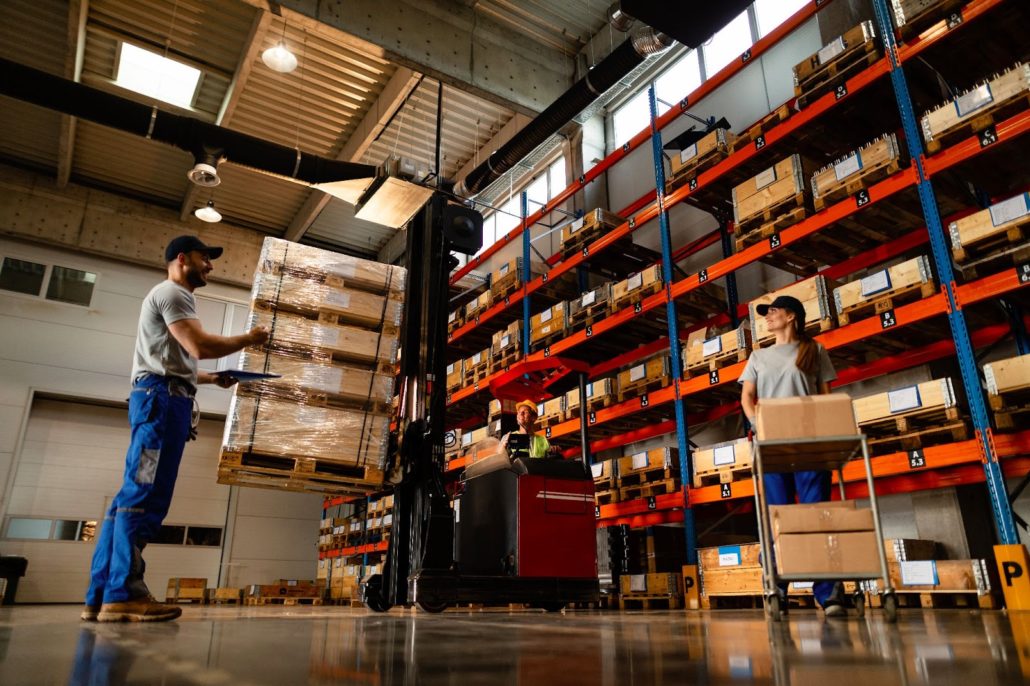In today’s fast-paced and highly-digitalized world, consumer expectations of product availability and quick order fulfillment mean that it is crucial for retailers to have a strong stock replenishment strategy in place.
Inventory replenishment is a crucial aspect of inventory management. The inventory replenishment process aids retailers in maintaining the optimal quantity of products at the right moment. This, in turn, results in high levels of customer satisfaction, more future sales, decreased expenses and increased revenues.
In this post, we’re answering the question “What is inventory replenishment?”, and discussing the most effective methods and best practices for optimal replenishment of inventory.
What is Inventory Replenishment?
Stock replenishment, another name for inventory replenishment, focuses on making sure the company places new orders from suppliers in time to satisfy customer demand. For manufacturers, retailers, and distributors who have numerous inventory storage facilities, the term can also refer to the process of moving stock from reserve storage to fulfillment locations so that it can be used to fulfill customers’ orders.
Benefits of Inventory Replenishment
With an effective inventory replenishment process in place, companies can swiftly complete orders and keep their customers happy while at the same time cutting expenses and boosting profitability. Some of the most important advantages of an efficient replenishment process:
Ensure you have enough safety stock
The inventory you have on hand in case of an emergency, such as a delay in the supply chain or unanticipated fluctuations in demand, is known as safety stock. In essence, safety stock enables your business to maintain flexibility in the face of supply and product demand variations.
If you have enough replenished safety stock, you won’t need to worry about supply chain disruptions. Instead, you’ll be able to complete customer orders on time and within your budget.
Avoid keeping excess stock
Keeping excess inventory means high carrying costs, such as the cost of warehousing goods. Additionally, unsold perishable items or time-sensitive inventory has a chance of going bad, which results in lost sales and lots of waste.
A good replenishment plan can help you avoid overstocking by making sure you don’t tie up your capital in inventory you don’t need or end up with lots of slow-moving items that you can’t sell (often referred to as dead stock).
Avoid stockouts
Did you know that about 70 to 90% of stockouts are caused by poor inventory replenishment? Customers become frustrated with your brand when there are stockouts because they can’t get the products they need when they need them. They also cost your business money because dissatisfied clients are more likely to go to your competition.
Consistent inventory replenishment helps you maintain the optimal product selection, meet customer demand, and encourage customers to come back for more.
Decrease shipping costs
If you’ve ever had to divide a single order into multiple shipments, you probably know how costly split shipments can be. In fact, splitting orders into multiple shipments can sometimes result in total prices that are twice or even three times higher than sending a single package. Moreover, split shipments also produce more waste and could make your customers confused.
Inventory replenishment can streamline your shipments while at the same time reducing transportation expenses. With continuous replenishment, you can make sure your fulfillment centers have the proper stock to meet demand. If each fulfillment center is well stocked and managed, you won’t need to pull items from other locations and split your shipments to complete orders.
Maintain high levels of customer satisfaction
Today’s consumers expect nothing less than a great customer experience. Most of them want to add products to their shopping carts and finish the checkout process quickly and without too much fuss. However, an out-of-stock notice on your website can seriously detract from that experience and perhaps cause missed sales. In fact, there is a 91% likelihood that unhappy customers won’t do business with your brand in the future.
Continually replenishing your inventory helps build trust with your customers since it shows that they can rely on your brand to have the products they want when they want them. This leads to improved customer experience, better retention, and ultimately, increased profitability.

Image by aleksanderlittleworlf on Freepik
Inventory Replenishment Methods
The inventory replenishment method you choose will depend on the business you’re running, whether product demand is stable or fluctuating, as well as the types of inventory items in question. For some inventory items, using a combination of these methods might make sense.
Here are the different methods companies can use for figuring out when to restock inventory items and how much is required.
Periodic method. With this method, businesses check stock levels at predetermined time intervals to see if they need to restock specific items. Periodic stock replenishment is frequently used by businesses with giant warehouses, predictable consumer demand, and little danger of stockouts. One drawback is that because the level of inventory is only assessed at those periodic review periods, it is impossible to determine whether a product is running low in between those dates.
Reorder point method. The reorder point method triggers replenishment when an item’s amount reaches a predetermined level or “reorder point”. The objective is to order new inventory to ensure that it is received before the quantity falls below a predefined safety stock level. The reorder point often varies among products because it depends on demand forecasting, the needed level of safety stock for each item, and lead time.
On-demand method. As the name suggests, this replenishment method bases inventory ordering decisions on future demand. This is a complicated method but it can be made simpler and more effective with the use of inventory software that takes into account both recent and past sales, lead times, and stock levels.
Top-off method. Retailers and wholesalers who carry large amounts of fast-moving goods typically use this replenishment method. This method makes sure that there are always enough inventory items that sell quickly to complete orders when consumer demands increase by replenishing picking shelves during downtime or slower periods.
Inventory Replenishment Best Practices
For successful replenishment of inventory, you need to have accurate information about your current inventory levels, supplier lead times, and customer demand. Here are some of the top best practices to take into consideration:
1. Improve inventory visibility
Improving inventory visibility is critical for an optimized stock replenishment strategy. Mistakes in supply chain management are much less likely to happen when everyone (including managers, distributors, and retailers) are all on the same page.
However, managing replenishment for hundreds or even thousands of products manually can be a complicated task. Using solutions created expressly for inventory management, such as ApparelMagic, is the best way to increase inventory visibility. Cloud inventory management software uses data on recent and historical sales to determine reorder points, help with demand planning, and notify inventory specialists when it’s time to reorder.
Technology may streamline the process of tracking your data in real time, reducing the chance of human error and giving your brand a crucial advantage over competitors who are still reliant on outdated techniques.
2. Perform regular inventory counts
In addition to automated inventory control systems and routine cycle counts, physical stock counts can confirm the accuracy of your inventory data and serve as a solid foundation for replenishment strategies. Physical inventory counts can also be used to spot possible issues like theft.
A number of stock-counting techniques are available to businesses, including periodic stocktaking, barcode scanning, and spot checks.
Image by Drazen Zigic on Freepik
3. Focus on supplier reliability
Suppliers provide inventory and are therefore closely related to your warehouse management operations. To put it another way, suppliers have the power to make or break your business, so it’s critical that you can count on them to deliver high-quality goods when you need them.
Making sure that your supplier is reliable and exchanging information in real-time is the best way to ensure on-time delivery. If you are selling in-demand commodities, it’s best to consider working with multiple suppliers.
4. Analyze and adjust your approach to inventory replenishment
In time, as your team discovers various patterns and trends in in-store data, you will have the chance to use that data to iterate and improve your process, and better plan for the future. If you incorporate your approach to inventory replenishment into a cycle of continuous improvement, you’ll be better equipped to pinpoint what is working and what needs to change.
Make sure to involve other participants in the supply chain, from manufacturers all the way down to store staff. It’s essential to gather data from a variety of sources in order to get a complete picture of your inventory replenishment procedure. When you are fully informed, you are far more prepared to make a difference with your actions.
The Bottom Line
Despite the fact that it can be daunting, stock replenishment is truly crucial. Poor inventory planning and distribution can break your retail business. Thanks to efficient inventory replenishment systems, businesses can guarantee they always have the appropriate inventory quantities on-hand to fulfill customer demand.
Proper inventory management including an efficient stock replenishment plan can help business owners increase profit margins by: Cutting inventory costs, preventing issues like excess inventory, dead stock, and stockouts, improving inventory forecasting, boosting cash flow, controlling carrying and shipping expenses, and ensuring an efficient flow of inventory.
Cloud inventory planning software like ApparelMagic can improve real-time visibility into your stock, automate complex replenishment processes, improve your entire supply chain, and ensure healthy inventory levels.


































